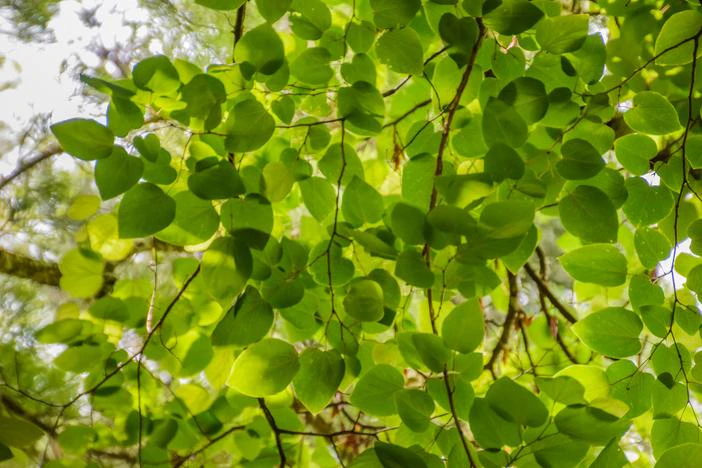Chain Flowered Redbud
(Cercis racemosa)
Chain Flowered Redbud (Cercis racemosa)
/
/

Krzysztof Golik
CC BY-SA 4.0
Image By:
Krzysztof Golik
Recorded By:
Copyright:
CC BY-SA 4.0
Copyright Notice:
Photo by: Krzysztof Golik | License Type: CC BY-SA 4.0 | License URL: https://creativecommons.org/licenses/by-sa/4.0 | Uploader: Tournasol7 | Publisher: Wikipedia Commons



Estimated Native Range
Climate Requirements for Dover, Delaware
| This Plant | Your Site | Plant Suitability for Your Location | ||
|---|---|---|---|---|
| • Precipitation | 40" - 58" | 45" | Aquatic | Aquatic |
| • High Temp. | 79°F - 92°F | 87°F | Your summer temperatures are normal for this plant. | Excellent |
| • Low Temp. | 27°F - 39°F | 25°F | Your winter temperatures may be too cold for this plant | Too cold |
This plant should grow very well at your location but requires an aquatic environment.
Summary
Cercis racemosa, commonly known as Chain Flowered Redbud, is a deciduous tree native to the forest margins, slopes, and valleys of Central and Southeast China. It typically grows to a height of 18-25 feet (5-8 meters) and a width of 9-12 feet (2.7-3.7 meters). The tree is notable for its long, pendulous clusters of flowers, which are a striking combination of pink and purple, blooming profusely in early spring before the foliage emerges. The flowers are followed by flattened, bean-like seed pods that can add interest to the tree’s appearance.
Chain Flowered Redbud is valued for its ornamental flowers and its ability to adapt to a range of garden settings. It is often used in urban landscapes, as a specimen tree, or planted in groups for a dramatic display when in bloom. This species prefers well-drained soils and can tolerate a variety of soil types, though it thrives best in moist, fertile substrates. While it can grow in full sun, it also does well in part shade, making it versatile for different garden designs. Gardeners should be aware that Cercis racemosa can be susceptible to canker diseases and verticillium wilt, and it may require pruning to maintain an attractive shape and promote good air circulation.CC BY-SA 4.0
Chain Flowered Redbud is valued for its ornamental flowers and its ability to adapt to a range of garden settings. It is often used in urban landscapes, as a specimen tree, or planted in groups for a dramatic display when in bloom. This species prefers well-drained soils and can tolerate a variety of soil types, though it thrives best in moist, fertile substrates. While it can grow in full sun, it also does well in part shade, making it versatile for different garden designs. Gardeners should be aware that Cercis racemosa can be susceptible to canker diseases and verticillium wilt, and it may require pruning to maintain an attractive shape and promote good air circulation.CC BY-SA 4.0
Plant Description
- Plant Type: Tree
- Height: 18-25 feet
- Width: 9-12 feet
- Growth Rate: Moderate
- Flower Color: Pink, Purple
- Flowering Season: Spring
- Leaf Retention: Deciduous
Growth Requirements
- Sun: Full Sun, Part Shade
- Water: Medium
- Drainage: Medium
Common Uses
Bee Garden, Bird Garden, Butterfly Garden, Drought Tolerant, Hummingbird Garden, Low Maintenance
Natural Habitat
Forest margins, slopes, and valleys in Central and Southeast China
Other Names
Common Names:
Scientific Names: Cercis racemosa
GBIF Accepted Name: Cercis racemosa Oliv.